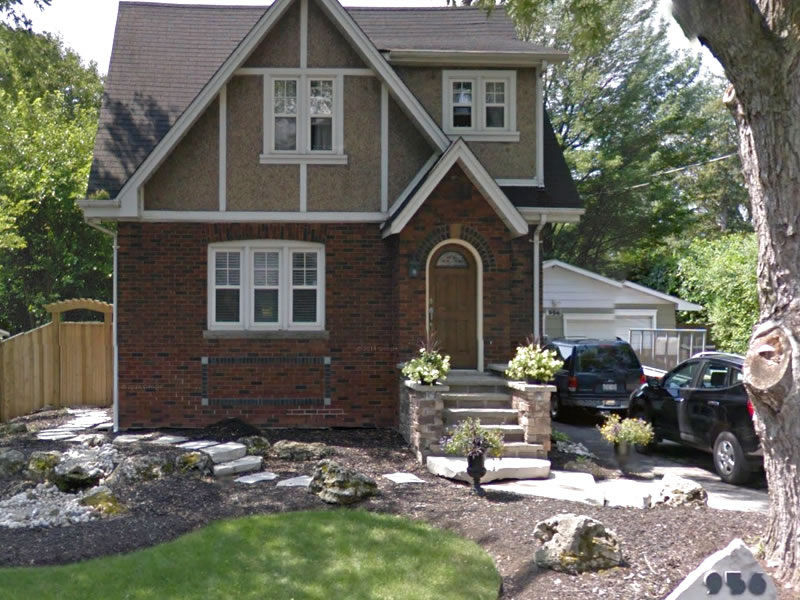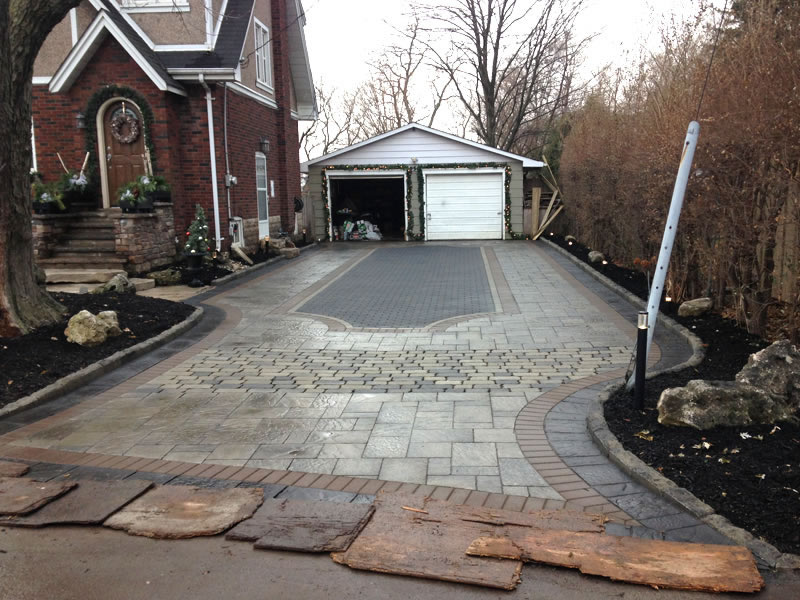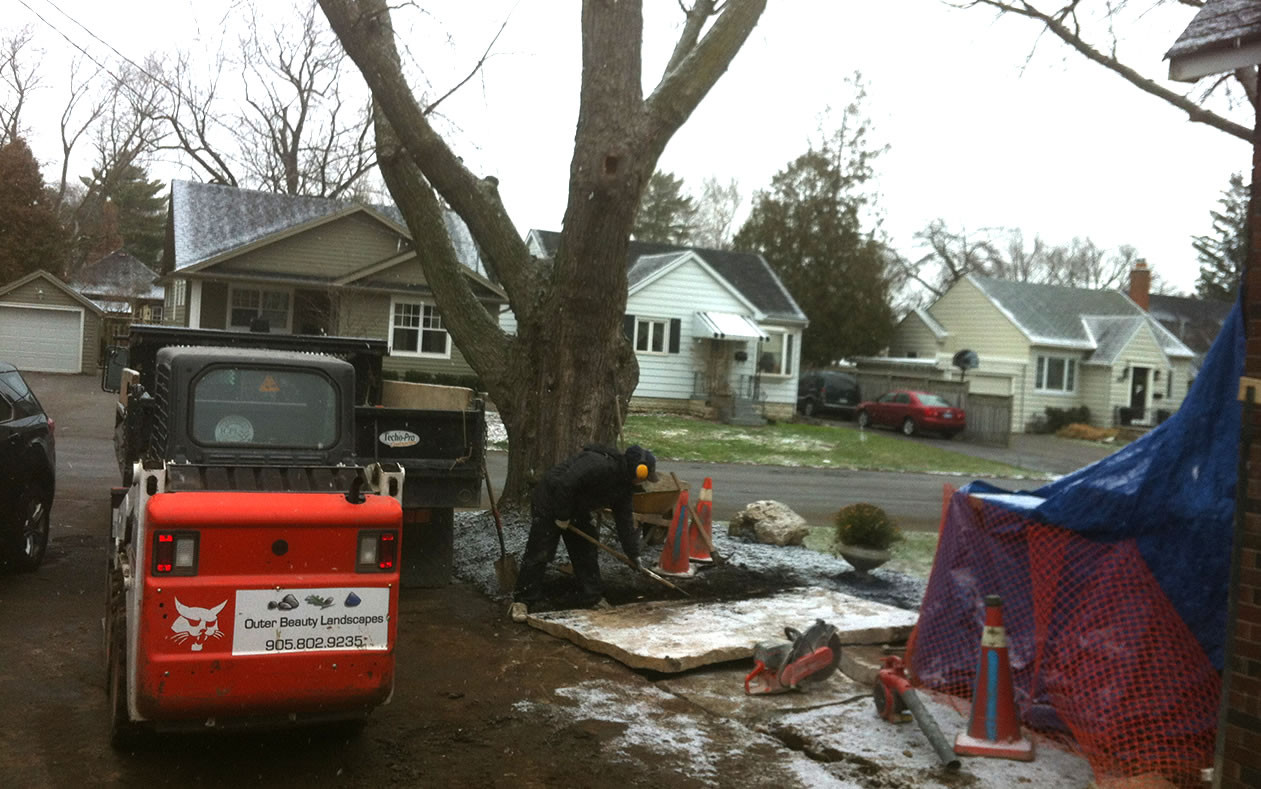The ‘Zero Run-off’ Yard
“We had contacted Outer Beauty Landscapes when it came time to renovate the front of our house and driveway and were impressed from day 1. How each and every one of our requests were integrated and executed was beyond expectations in both design and construction. The crew from Outer Beauty were great, always kept us informed on the days goal and overall progress and were very professional while seeming to have fun doing what they do. Having Mike, the owner and designer, on-site daily was also an added bonus and allowed for a line of constant communication which was welcomed. We cannot say enough about how much we love the transformation of our house thanks to Outer Beauty Landscapes. The final design of the driveway, entrance, gardens and lighting were beyond imaginable while seamlessly achieving our goal to capturing run off. We would highly recommend Outer Beauty Landscapes to anyone and everyone planning a landscape project”.
C and M – Burlington, On
Client Wishlist / Project Scope
Budget
Wishlist
$26,000 – $31,000
Interlocking Paver Driveway construction with full excavation
$2,200
Stone curbing along driveway
$1,200
Low-Voltage lighting along driveway
$1,300
Garden and rockery along driveway
$1,800
Waterfall/Rain Harvest feature
Unique Design Scenario
Unlike most major outdoor renovations, there were no real impediments or limitations on this site which would typically dictate where/how we could design and construct landscape elements; there were no real challenges, only compiling a creative design for a fairly large driveway space.
What made this a unique scenario was a request made by the client during our initial consultation to keep as much water run-off on the property as possible, as creatively as possible.
At the time, there were 3 rain barrels connected to the downspouts on the back of the house and garage, however, both downspouts on the front of the house spilled freely into the garden and onto the driveway which then flowed into the street; this was an opportunity for creativity.
For the driveway, installing a permeable system below the pavers to absorb and collect surface run-off was not an issue and has been done before, the issue was how to incorporate a permeable system while preventing the water which was collected from reaching the house foundation and potentially causing water issues.
For the downspout, which spilled freely into the garden, putting a rain barrel as a display piece to collect run-off was not an option which provided a design opportunity to not only capture rain water, but to incorporate a new feature element into the front gardens.
Typically, the biggest challenges we face in design/construction come from specific limitations on the site itself. In this case, the challenge came from the client in creating a more environmentally conscious landscape that would be unique and transform the esthetic of front of their property.
Design Solution
To address the first issue of collecting surface run-off from the driveway while ensuring no water collected could reach the foundation meant that we needed to get creative in how we constructed the base materials below
Our approach to this project was to construct the base for the driveway as a hybrid model, incorporating a properly graded and compacted granular base in the upper area of the driveway to prevent any water flow towards the house and installing the permeable base materials to collect surface run-off towards the end of the driveway, away from the house foundation
Once we recognized the need for a hybrid base system as the solution, we were able to design the layout of the interlocking pavers based on where we needed the surface run-off to enter the permeable portion of the driveway
In order to allow surface water to freely flow down into the permeable system, as well as break up the design of the driveway, we installed a large band of cobblestone-like pavers which act as a catch basin and are designed for permeable applications such as this
The area below the cobblestone pavers to the end of the driveway is essentially a dry-well reservoir where all surface run-off is collected and is then allowed to be naturally filtered into the existing subsoil or taken up by the root system of the large, mature tree in the front garden, thereby eliminating pollutants and contaminants from reaching the city storm water system and providing a benefit to the existing plant materials
The second project of converting the existing downspout into a rain harvesting system that would be visually appealing within the front gardens posed less of a challenge in comparison to the driveway
Our solution was to create a below-ground reservoir, away from the house foundation, lined with pond liner which the downspout would be directed to outlet into in order to capture the rain water flowing from the roof
This achieved the goal of collecting the run-off but we still needed some added creativity in order deliver a stand-out feature that integrated seamlessly within the front landscape
How we accomplished this was to transform the simple reservoir into a functional waterfall feature by installing a pond pump and hiding the downspout and plumbing using a variety of rockery stones. This created a natural stream effect which then spilled out over one of the boulders in the garden, creating a trickling waterfall which then flowed back into the reservoir system to be pumped back through
During times of heavy rain when the downspout may fill the harvesting system, an overflow pipe was installed to let any excess water that the system was not able to handle weep out and onto the front lawn area, benefiting the grass
By installing the pumping system to the rain water reservoir gave us 3 benefits; First, we were able to transform a rudimentary reservoir into stand-out feature within the garden, bringing in an additional element to the landscape. Secondly, by keeping the water moving, the likelihood of any algae build up or insects successfully using the reservoir as a breeding ground would be minimized. Lastly, by simply removing the tubing from the waterfall feature and adding a hose nozzle, the client could pump out the collected rain for use in watering the front garden or lawn
As an added incentive above the environmental benefits of these two types of rain-harvesting systems, some municipalities (particularly Kitchener/Waterloo) are now giving residents credits on their water bills based on the amount of surface run-off they are able to divert away from the sewer systems, creating a win-win situation all around


Use the arrows on the left and right to view the project from start to finish!



